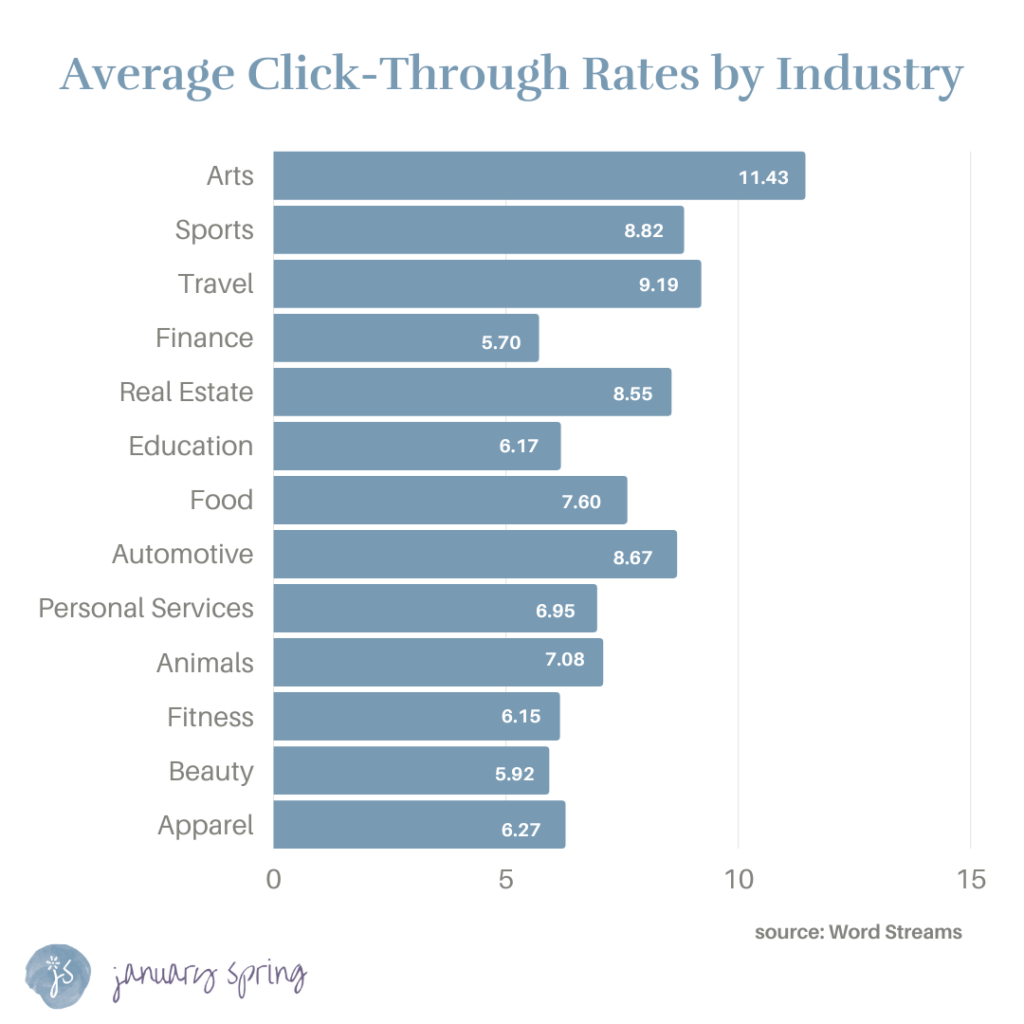In 2023, the only thing constant is change, and paid social media is leading the way in the ever-evolving digital landscape! This year, new statistics and data have highlighted the undeniable power and potential of paid social media to help you and your advertisers achieve marketing objectives. As we look further into these numbers, it’s clear that social media isn’t merely a platform—it’s an important part of our lives, our businesses, and our future.
What’s a Good CTR for Paid Traffic Campaigns?

Paid Social Media vs. Organic Social Media: What’s the Difference?
So, what’s the difference? Aren’t they both just social media? Well yes, but it’s a bit more complicated than that! While both are forms of social media, they have different purposes, origins and uses.
Organic social media is building and engaging with an audience on social media platforms through non-paid methods. This involves creating and sharing content on your brand’s social media profiles without using advertising budgets to boost visibility or reach a broader audience. Organic social media relies on the natural engagement and interactions of your existing followers and those who come across your content without any paid promotion. Unfortunately, organic social media results in limited visibility from fans or followers. The average post is seen by 2.6% of a business’s followers. Organic still plays an important role in the presence of a business. Just think, if you are researching a local company and check their Facebook page, how would you feel if their last post was from 2019? Not good, right? Organic posts help your most loyal as well as potential customers know you are a thriving, active business.
On the other hand, paid social media involves using advertising budgets to promote content, reach a specific target audience, and increase the visibility of your brand on social media platforms. Unlike organic social media, where engagement relies on non-paid methods, paid social media allows businesses to strategically give funds to boost posts, run ads and achieve specific marketing objectives. Both forms of social media are important to have, but we are going to focus on why paid social can specifically help you and your advertisers accomplish your marketing goals.
The Benefits of Paid Social Media
Targeted Advertising: Paid social media platforms provide incredibly detailed targeting options. Advertisers can reach specific demographics, interests, behaviors, and even custom audiences, ensuring their ads are seen by the most relevant audience.
Measurable ROI: Your advertisers can track and measure the performance of their paid social media campaigns in real-time. This level of data-driven insight allows for continuous optimization, ensuring every dollar spent delivers measurable results.
Personalized Experiences: Paid social media enables the delivery of personalized content to individual users. This personalization fosters deeper connections with the audience, increasing the likelihood of conversion and customer loyalty.
Competitive Edge: Paid social media allows businesses of all sizes to compete on a level playing field. Small businesses can use targeted ads to go head-to-head with larger competitors.
The Social Media Landscape in 2023
1. The Global Social Media Phenomenon
4.9 billion people worldwide are currently part of the social media landscape in 2023. This number is expected to climb even higher, reaching a whopping 5.85 billion users by 2027. To put this into some perspective, there are 7.88 billion people alive right now, meaning 62.2% of the world has at least one form of social media. As an advertiser, this is an amazing opportunity to reach a wide audience through ANY platform.
2. The Multifaceted User
Social media users today are not stuck on a single platform! In fact, on average people now maintain a presence across six to seven different platforms every month. This shift emphasizes the need for a multi-platform approach to social media marketing. To reach your advertisers’ audiences effectively, you must meet them where they are—across multiple platforms.
3. The Currency of Time
Time is precious, and in the digital age, it holds a new level of significance. On average, people around the world dedicate 145 minutes of their day to social media. Interestingly, while Americans spend slightly less time (at 2 hours and 7 minutes daily) the global average is a testament to the huge influence of social media. When we consider this usage over an average lifespan of 73 years, it amounts to a staggering 5.7 years spent on social media platforms. For your advertisers, this is a goldmine of opportunity, highlighting the reach and potential of an effective social media strategy.
4. Short-Form Videos: The Engaging Content
In a world where attention spans are shrinking, short-form videos have emerged as the kings of engagement. These bite-sized videos, typically less than a minute in length, captivate the attention of 66% of consumers. Their highly shareable nature (and 2.5 times higher engagement rate) compared to longer videos make them a vital tool for advertisers. Furthermore, 34% of consumers appreciate the authenticity and genuineness that shorter content offers.
5. Clicking Through Challenges
In 2022, the average click-through rate (CTR) for ads across all social media platforms was 1.21%. As marketers, this indicates that social media advertising is a branding tool, not necessarily a direct response channel. This stat also highlights the ongoing need for creating compelling social media ad campaigns. Maximizing engagement and conversion remains a constant challenge in the digital landscape.
6. Transforming Retail through Social Media
Social media’s influence extends beyond engagement; it has revolutionized the face of retail. An impressive 76% of social media users have made a purchase based on a brand’s social media post. The purchase journey varies—some make immediate purchases (11%), others defer to online purchases (44%), and some opt for in-store shopping (21%). However, the undeniable fact remains that social media has fundamentally changed the retail landscape.
What Does this Mean for Advertisers?
In summary, the undeniable advantages of paid social media, including targeted advertising, cost-effective reach, measurable ROI, immediate impact, personalized experiences, and a competitive edge, emphasize the importance that an experienced marketer in this domain is necessary. As advertisers and marketers, embracing the potential of paid social opens the door to a wealth of opportunities for connectivity, engagement, and triumph in the digital era. Therefore, as we venture into 2023 and beyond, let us harness the capabilities of paid social media to shape the future of marketing and communication, ensuring that each click, like, and share contributes meaningfully to our collective success!

